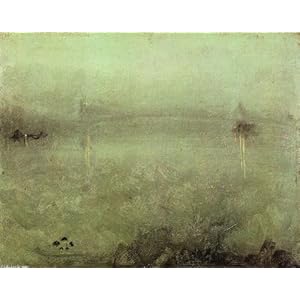When Canvas Becomes “Art”
At what point does canvas become a piece of “art” and under what conditions? Of course opinions may vary, but I will be so bold as to ask and to answer this burning question that has left me quite curious.
I will begin with a brief hypothesis: Canvas becomes art at the moment it has been transformed by the person that impresses their idea upon it to share a message within a visual conservation between the artist and the observer.
By definition, canvas is a textile. As the trusted community editors of Wikipedia would say, “Canvas is an extremely heavy-duty plain-woven fabric used for making sails, tents, marquees, backpacks, and other items for which sturdiness is required. It is also popularly used by artists as a painting surface, typically stretched across a wooden frame. It is also used in such fashion objects as handbags and shoes.” (retrieved June 21, 2012 – G. M. H.)
Conceptually for the artist and his or her audience, it is a plane that is used to express emotions, re-tell stories that were either once forgotten or rarely if ever shared, and convey messages that are otherwise gone unheard. To further explore my hypothesis about canvas I would like to further explore the genre of Abstract Art that may help to prove my point.
ABSTRACT ART
For the past year, I have been wildly obsessed with Abstract Art. Being a writer and watercolor painter, the visual language of this genre speaks to me in a way that is a uniquely personal conversation between the artist who has created the work and my own interpretation of what that person may want me to know.
I find Abstract Art incredibly personal, and enjoy learning about the artist that has taken the time to share their stories with others. To “learn” about the abstract painter, I read their work through the observations of an unwitting outsider. I like to let the painting introduce itself to me then relax my own expectations of how I am supposed to feel about it, and simply receive its message.
The personal touch of Abstract Art is evident in the surface of the canvas that the artist uses. This person has taken the physical plane of the canvas and transformed it into an extension of themselves with the use of pointedly purposeful pencil outlines, lines formed from paint on natural bristle brushes, and cuts made in the canvas to create sharp effects that emphasize points and arguments. Digital images of abstract art are just fine but for the full effect of the messages of Abstract genres, I highly recommend visiting your local art museum!
I am not sure if there is a point to be proven necessarily by stating my opinion about the creation of Art on canvas… but I am happy to be able to kind of, sort of explain it in a way that utilizes the term hypothesis! If it doesn’t make sense to you, then take a moment to enjoy this James Abbott McNeil Whistler painting below and keep Canvas Lot’s Blog “bookmarked” for more of my explanations.

